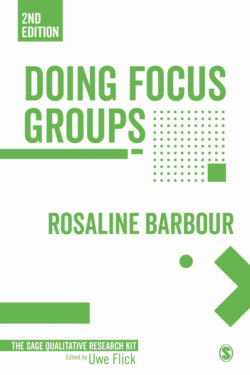Читать книгу Doing Focus Groups - Rosaline Barbour - Страница 17
На сайте Литреса книга снята с продажи.
Assets of focus groups Accessing the ‘hard-to-reach’
ОглавлениеLargely because of their perceived informality, focus groups have earned a reputation in terms of their capacity to engage with those who may otherwise slip through the net of surveys, or studies that rely on recruiting those who are in contact with services. They have regularly been the method of choice for researchers attempting to access groups viewed as ‘hard to reach’, such as members of ethnic minority groups (Chiu and Knight, 1999), migrants (Ruppenthal et al., 2005), or street-living youth (Ferguson and Islam, 2008). Some groups, of course, may be marginalized in respect of several of their attributes, such as the drug-using gay men living in an environment characterized by high rates of HIV infections studied by Kurtz (2005) or children with visual impairments (Khadka et al., 2012). Focus groups can encourage greater candour (Krueger, 1994) and give participants permission to talk about issues not usually raised, especially if groups have been convened to reflect some common attribute or experience that sets them apart from others, thus providing ‘security in numbers’ (Kitzinger and Barbour, 1999). More recently, online focus groups have been employed in order to extend the reach of research to include constituencies such as young adults with potentially stigmatizing skin conditions (Fox et al., 2007), children and adolescents born with only one arm (de Jong et al., 2012), and gay and bisexual adolescents (Ybarra et al., 2014). (Online focus groups are discussed in more detail in Chapter 4 on research design.) Focus groups – whether face-to-face or online – may allow the researcher to engage with respondents who are otherwise reluctant to elaborate on their perspectives and experiences.
